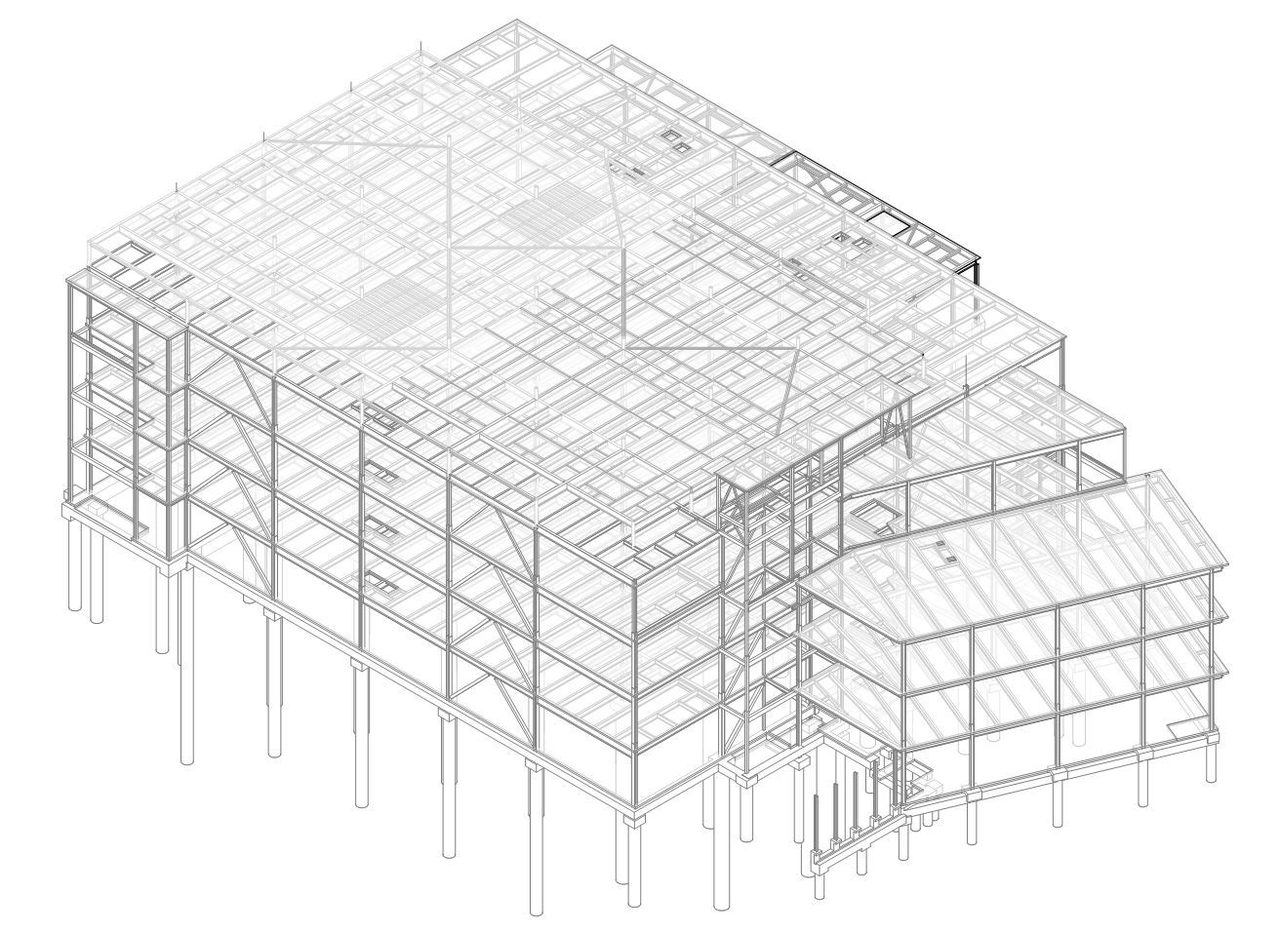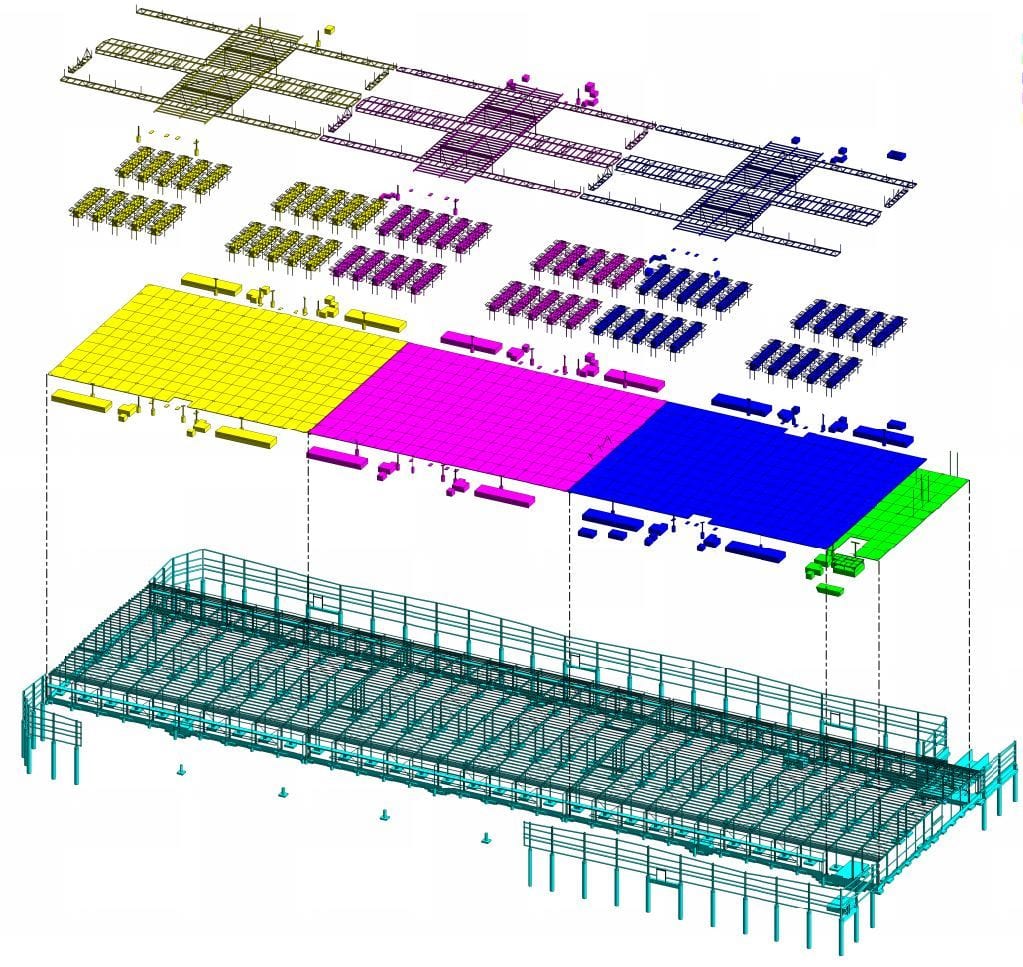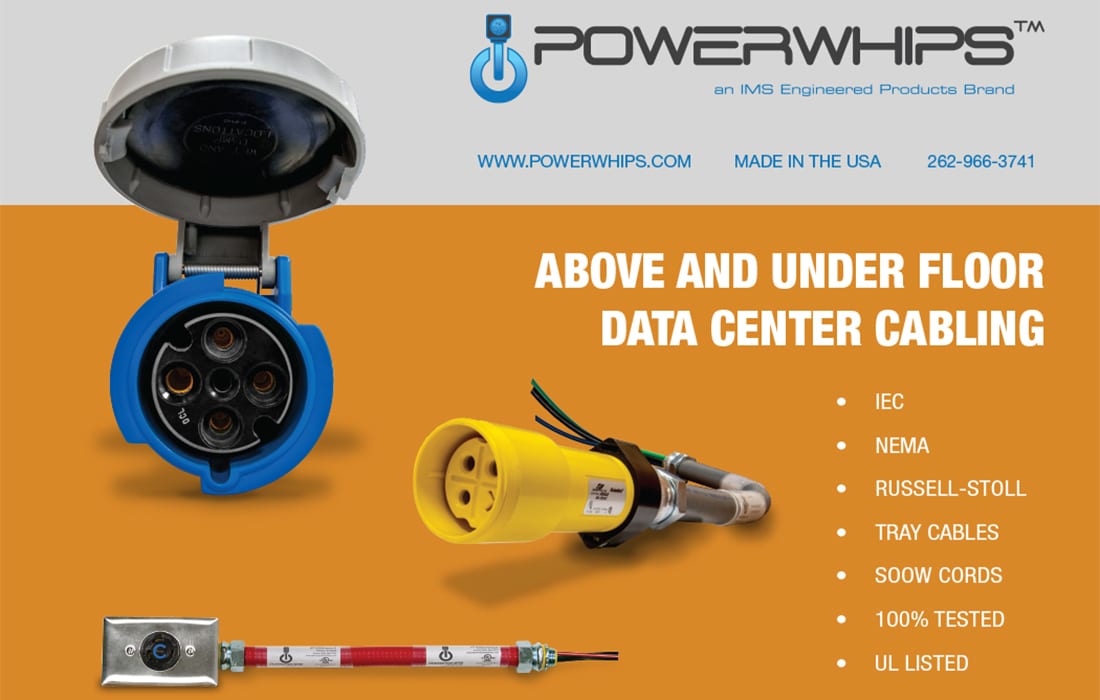// Data Center Design //
Various factors push developers in different directions
Six Trends in Data Center Design
In the age of virtual working and cloud computing, the demand for data has never been greater. This has brought about a sharp increase in data center construction. As factors like market demands, climate change, and construction logistics push developers in different directions, here are six design trends influencing the data center market today and how they can influence design of building structures.
1. Going Vertical — With the cost of land on the rise, companies are finding more value in maximizing square footage within a smaller site footprint. Multistory data centers (typically three or four stories but going up as high as 10) are becoming increasingly common.

When building tall, data center design needs to account for high loads for both the gravity and lateral systems.
Photos courtesy of Thornton Tomasetti
Structural Spin — The required floor capacity for a server room is 250 pounds per square foot compared with 50 pounds per square foot for that of a standard office. This means one floor of a data center carries roughly the same weight as a five-story office building. With this in mind, structural engineers must closely consider column spacing to not overburden framing and foundation elements. Lateral load demands are also significantly increased compared to those of a single-story system due to the large, above-grade seismic weight.
2. Reducing Carbon Emissions — The growing negative impacts of climate change have building owners and designers placing a higher priority on reducing their carbon footprints. This relates to both operational considerations as well as embodied carbon — the carbon emissions associated with the creation and installation of materials.
Structural Spin — Structural systems account for approximately 70% of the embodied carbon within a building. This makes structural considerations a key component in reducing the embodied carbon for a given project. Creating structural efficiencies and utilizing low-carbon materials, such as mass timber, are two reduction strategies that can be implemented on buildings of this type when regional market conditions permit.
3. Capitalizing on Repetition — When volume and speed to market are top drivers of business, standardized designs allow for optimized, efficient solutions to be quickly implemented across multiple sites. That’s why an increasing number of companies are choosing to develop one or more design prototypes, which can meet their needs across a range of properties.
Structural Spin — Competing with the idea of standardized designs is the reality that all sites bring their own unique conditions and challenges. Developing a robust and repeatable concept means it needs to be flexible enough to work across varying geographic conditions. At the same time, attempting to “design for all cases” can lead to a building that is overdesigned for most sites, creating unnecessary costs.
4. Phasing Fit-Outs — One way to ensure faster implementation is to have a basic infrastructure constructed ahead of needing it. Developers may therefore choose to construct a large data center shell all at once, while only fitting-out a portion of it with equipment on Day 1. This takes advantage of a mobilized construction crew that can complete the upfront time of the initial building construction, ultimately saving time when it comes time for final deployment.
Structural Spin A phased fit-out requires special attention for any temporary conditions that may exist along the way. If portions of the building are to be left unheated for a period of time, for example, details and foundations will need to more closely consider any impacts temperature variation will have on the structure and soils.

One way to ensure faster implementation is to have a basic infrastructure constructed ahead of needing it.
5. Exploring Alternate Cooling — The growing demand for data has driven developers to look for innovative ways of increasing capacity and efficiency. This has led to exploring new methods of cooling servers, which may produce more robust and reliable performance at a higher density.
Structural Spin — Each cooling system comes with its own required equipment and routing, all of which requires coordinated structural support. Close attention must be paid to the support requirements of these new systems to ensure that proper accommodations are implemented. More than ever, structural designs must be flexible and capable of modification in order to accommodate these ever-evolving technologies.
6. Repurposing Existing Buildings — Driven by many of the factors previously stated — demand for space, lowering costs, climate considerations — more companies are choosing to repurpose existing buildings for data center use. Whether it be a vacant warehouse or unused office space, this allows developers to save on the cost, schedule, and embodied carbon associated with a new building. They can then focus their resources instead on required equipment and speed to market.
Structural Spin — Like with any adaptive reuse project, data center designers must take care to evaluate the existing structural system for its ability to support the new program. The high load-carrying capacity required for data centers is often much higher than an average building. Utilizing buildings previously outfitted for heavy industrial purposes, or using one-story structures where equipment can sit on grade and heavy routing can be column-supported by new supplementary steel, can both be useful strategies to minimize the need for structural upgrades.
Vacant industrial facilities can be ideal candidates to repurpose as data centers.

The need for data infrastructure is not slowing down, and so it is expected neither will data center construction. As with any growth industry, the data center market will continue to evolve, and design teams will need to think creatively about maximizing performance and reach while minimizing cost, carbon emissions, and construction schedule.
Karen Grossett
Karen Grossett is a senior associate in Thornton Tomasetti’s Chicago office. A leader of the firm’s critical facilities team, she has more than 10 years of experience in data center structure design.


